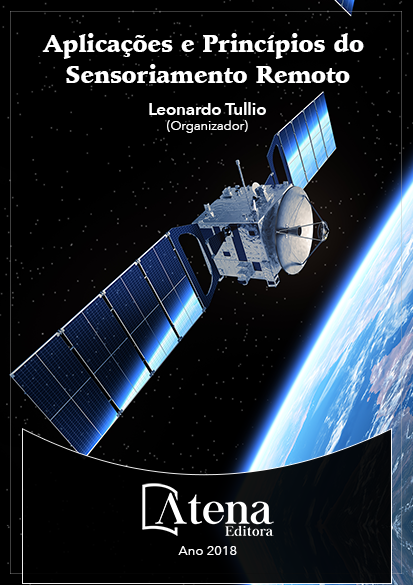
IMAGEM DE REFLECTÂNCIA DE SUPERFÍCIE USGS COMO REFERÊNCIA PARA COMPARAÇÃO DE DIFERENTES MÉTODOS DE CORREÇÃO ATMOSFÉRICA
Os sensores dos satélites de
sensoriamento remoto registram imagens
que, de alguma forma, possuem interferência
atmosférica. Assim, foram desenvolvidos
métodos de correção atmosférica e alguns
produtos em reflectância de superfície já foram
disponibilizados, como por exemplo, as imagens
da plataforma Landsat 8. Neste contexto, o
objetivo do presente trabalho é comparar dois
métodos de correção considerando como
referência os valores obtidos na imagem de
reflectância de superfície disponibilizada pela
USGS e verificar qual a influência nos valores
do índice radiométrico para áreas construídas.
A metodologia seguiu algumas etapas, como:
aquisição de três imagens Landsat 8 (reflectância
de superfície (SR), reflectância aparente (TOA),
e em números digitais (ND)); conversão dos ND
para valores físicos e correções atmosféricas
pelo método DOS e FLAASH; cálculo do índice
radiométrico NDBI; coleta de assinaturas
espectrais para alvos de área construída,
vegetação, água e solo exposto; comparação
entre as imagens de reflectância e a imagem
referência; e comparação entre os valores
NDBI para classe área construída. Desta forma,
foi possível constatar que diferentes métodos
de correção podem gerar diferentes valores
de reflectância de superfície e NDBI para os
mesmos alvos. Assim, surge a dúvida sobre
qual método seria o mais correto. Neste estudo,
a imagem corrigida pelo FLAASH apresentou
valores de reflectância e NDBI mais próximos
aos da imagem referência. Estudos que utilizam
imagens Landsat 8 contam com imagens já
corrigidas, o que facilita o trabalho e garante
maior confiabilidade.
IMAGEM DE REFLECTÂNCIA DE SUPERFÍCIE USGS COMO REFERÊNCIA PARA COMPARAÇÃO DE DIFERENTES MÉTODOS DE CORREÇÃO ATMOSFÉRICA
-
DOI: Atena
-
Palavras-chave: DOS, FLAASH, área urbana, índice radiométrico, curvas espectrais.
-
Keywords: DOS, FLAASH, urban area, radiometric index, spectral curves.
-
Abstract:
Satellites’ remote sensors register
images that, in some way, carry atmospheric
interference. Thus, methods of atmospheric
correction were developed and products of
surface reflectance were made available, such
as, for example, the images of the Landsat 8
platform. Regarding this context, the objective of our study is to compare two methods
of correction, while considering as reference the values obtained in the images of
surface reflectance provided by the USGS, and to verify what is their influence on
the values of radiometric indices for constructed surfaces. Our methodology followed
some steps, such as: the acquisition of three Landsat 8 images (surface reflectance
[SR], top of atmosphere reflectance [TOA] and digital numbers [DN]); conversion of
the DN into physical values and atmospheric corrections through DOS and FLAASH
methods; calculation of the radiometric index NDBI; collection of spectral signatures for
targets of constructed surfaces, vegetation, water and bare soil; comparison between
the reflectance images and the reference image; and comparison between the NDBI
values for the constructed surface’s class. As result, it was possible to determine that
different correction methods can generate different values of surface reflectance and
of NDBI for the same targets. Thus, it remains undetermined which method is better
suited. In our study, the image corrected with FLAASH presented values of reflectance
and of NDBI that were closer to those of the reference image. Studies that use Landsat
8 image rely on images corrected in advance, which facilitates work and guarantees
more reliability.
-
Número de páginas: 15
- Patricia Michele Pereira Trindade


